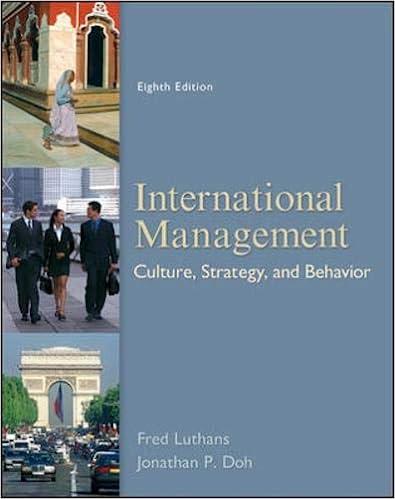Australia is the smallest continent but the sixth-largest country in the world. It lies between the Indian
Question:
Australia is the smallest continent but the sixth-largest country in the world. It lies between the Indian and Pacific oceans in the Southern Hemisphere and has a landmass of almost 3 million square miles (around 85 percent the size of the United States). Referred to as being "down under" because it lies entirely within the Southern Hemisphere, it is a dry, thinly populated land. The outback is famous for its bright sunshine, enormous numbers of sheep and cattle, and unusual wildlife, such as kangaroos, koalas, platypuses, and wombats. Over 20 million people live in this former British colony. Although many British customs are retained, Australians have developed their own unique way of life. One of the world's most developed countries, Australia operates under a democratic form of government somewhat similar to that of Great Britain. Gross domestic product was $824.3 billion in 2009.
A large financial services MNC in the United States examined the demographic and economic data of Australia. This MNC concluded that there would be increased demand for financial services in Australia. As a result, the company set up an operation in the capital, Canberra, which is slightly inland from Sydney and Melbourne, the two largest cities.
This financial services firm began in Chicago and now has offices in seven countries. Many of these foreign operations are closely controlled by the Chicago office. The overseas personnel are charged with carefully following instructions from headquarters and implementing centralized decisions. However, the Australian operation will be run differently. Because the country is so large and the population spread along the coast and to Perth in the west, and because of the "free spirit" cultural values of the Aussies, the home office feels compelled to give the manager of Australian operations full control over decision making. This manager will have a small number of seniorlevel managers brought from the United States, but the rest of the personnel will be hired locally. The office will be given sales and profit goals, but specific implementation of strategy will be left to the manager and his or her key subordinates onsite.
The home office believes that in addition to providing direct banking and credit card services, the Australian operation should seek to gain a strong foothold in insurance and investment services. As the country continues to grow economically, this sector of the industry should increase relatively fast. Moreover, few multinational firms are trying to tap this market in Australia, and those that are doing so are from British Commonwealth countries. The CEO believes that the experience of the people being sent to Australia (the U.S. expatriates) will be particularly helpful in developing this market. He recently noted, "We know that the needs of the Australian market are not as sophisticated or complex as those in the United States, but we also know that they are moving in the same direction as we are. So we intend to tap our experience and knowledge and use it to garner a commanding share of this expanding market."
www.csu.edu.au/australia.
Questions
1. What are some current issues facing Australia? What is the climate for doing business in Australia today?
2. What type of organizational structure arrangement is the MNC going to use in setting up its Australian operation?
3. Can this MNC benefit from any of the new organizational arrangements, such as a joint venture, the Japanese concept of keiretsu, or electronic networks?
4. Will this operation be basically centralized or decentralized?
Step by Step Answer:

International Management Culture Strategy And Behavior
ISBN: 9780078112577
8th Edition
Authors: Fred Luthans, Jonathan Doh





